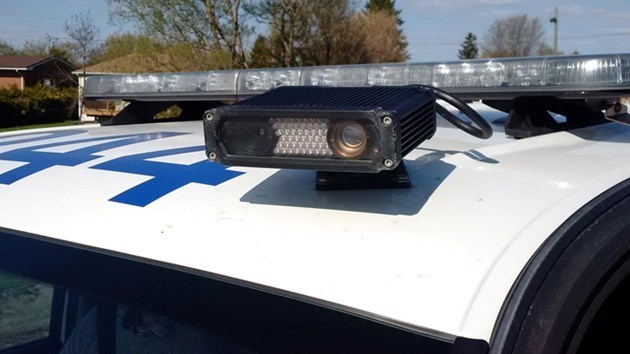Greater Sudbury Police are reporting good results from their use of a technology that allows them to scan thousands of license plates automatically every hour.
Police received $37,000 in funding for the two-camera automated License Plate Recognition Device in 2013. Because of delays in establishing an information link with the system and the provincial database, police didn't begin using it until August 2015.
Between September 2015 and September 2016, the device scanned 127,935 vehicles, resulting in 1,942 hits. A “hit” occurs when the device detects a plate or car owner who has an issue with the Ministry of Transportation.
As a result of the hits, police laid 231 charges. Of those, more than half – 119 – were for out-of-date stickers on plates. Another 34 charges were for invalid licenses and 32 were for suspended drivers.
There are some issues with using the device, said a report presented to the police services board this week. For example, identifying a vehicle with plate issues is much easier than pulling the driver over.
“Whether operating in the mobile or stationary mode and a suspended driver hit is obtained, the officers must catch up to the vehicle to confirm basic descriptors of the driver, confirm the plate, and take enforcement action if warranted,” the report said. “There are times when the vehicle is not found due to delays in entering traffic, resulting in a loss of an enforcement opportunity.”
The devices don't work well in poor winter weather, and Ontario's “B” series of license plates are crumbling quicker than expected, making accurate reads more difficult.
“Northern Ontario also has a high number of vehicles that utilize bike racks, snow plows, salt spreaders, trailers, and license plate covers, limiting the ability to detect the license plate and thereby impacting the effectiveness of the system,” the report said.
The amount of paperwork required when using the scanner is also time-consuming.
There are advantages, however. For example, the scanner can check far more plates than an officer can do manually. And the infrared technology and reflective on the plates means they can scan at night, even when it rains or is foggy.
With the completion of the pilot project, police are recommending some changes to make the devices more effective. For example, moving them to patrol cars, instead of the SUVs in the traffic management unit, will place them lower to the ground.
There are also plans to train more patrol officers to use the scanners.
“During the Pilot, the (scanner) was tested only by officers assigned to the traffic management unit,” the report says. “The additional assessment period in patrol operations will expand assessment parameters to include access to 24/7 deployment in a multitude of conditions and a broader variety of enforcement initiatives.”
Prices have also dropped, with two-camera scanners now selling for $18,000, and four-camera ones selling for $22,000. But that doesn't mean police want to buy more right away.
“The pilot team has recommended that further evaluation is necessary in patrol operations capacity before purchasing additional systems,” the report said.



